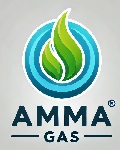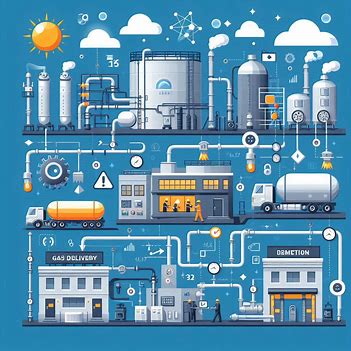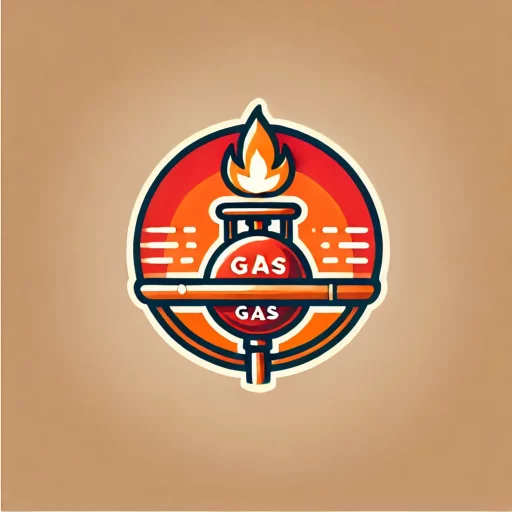Mitigating safety risks in gas distribution is critical to avoid accidents, ensure the well-being of customers and employees, and protect the company’s reputation. For Amma Gas, ensuring a robust safety management system involves preventive measures, emergency response planning, and adherence to safety standards. Below are strategies to mitigate safety risks effectively:
1. High-Quality Equipment & Installation
a. Use of Certified Equipment
- Mitigation: Ensure that all gas tanks, pipes, meters, and other equipment are certified by relevant authorities for safety and quality.
- Why It Matters: High-quality equipment reduces the risk of leaks, explosions, or other failures that could lead to accidents.
b. Proper Installation by Licensed Professionals
- Mitigation: Only licensed and experienced professionals should handle the installation of gas systems, including tanks, piping, and meters.
- Why It Matters: Poor installation increases the risk of leaks and operational hazards. Proper installation ensures compliance with industry standards and reduces safety risks.
c. Use of Corrosion-Resistant Materials
- Mitigation: Use piping and tanks that are corrosion-resistant, especially in coastal areas like Chennai, where humidity and salt exposure can lead to material degradation.
- Why It Matters: Corrosion can lead to leaks, and using appropriate materials can prevent long-term deterioration of gas systems.
2. Routine Maintenance & Inspection
a. Regular Maintenance Schedule
- Mitigation: Establish a detailed maintenance schedule, including periodic inspections, testing for leaks, and replacing worn-out parts.
- Why It Matters: Regular maintenance identifies potential issues before they escalate, ensuring that the system continues to operate safely.
b. Leak Detection Systems
- Mitigation: Install gas leak detectors at critical points in the gas distribution system, especially near storage tanks, in kitchens, and near meters.
- Why It Matters: Early detection of leaks can prevent accidents. Automatic shut-off systems connected to leak detectors can stop gas flow in case of a detected leak.
c. Third-Party Safety Audits
- Mitigation: Conduct third-party safety audits annually to ensure all safety protocols are being followed and to uncover any hidden risks.
- Why It Matters: External audits provide an unbiased assessment of the system and ensure compliance with the latest safety standards.
3. Training & Awareness Programs
a. Employee Training on Safety Procedures
- Mitigation: Regularly train staff on safety protocols, including how to handle gas equipment, emergency response, and first aid.
- Why It Matters: Well-trained employees can respond quickly and effectively in the event of an emergency, reducing the severity of incidents.
b. Customer Safety Education
- Mitigation: Educate customers (apartment residents, businesses, and hospital staff) on gas safety, such as how to detect a leak, what to do in case of a leak, and emergency numbers to call.
- Why It Matters: Ensuring that customers know how to respond in the event of a gas emergency can reduce the impact of accidents and potentially save lives.
c. Emergency Drills
- Mitigation: Conduct regular emergency drills in large complexes, businesses, and hospitals to ensure that both employees and customers are familiar with evacuation procedures and safety protocols.
- Why It Matters: Being prepared for emergencies ensures quick and effective action during an actual incident, reducing potential harm.
4. Compliance with Safety Standards and Regulations
a. Adherence to National and International Safety Standards
- Mitigation: Follow all applicable standards, such as Indian safety regulations (Petroleum and Explosives Safety Organization – PESO) and international standards like ISO 14001 for environmental safety.
- Why It Matters: Regulatory compliance ensures that systems are built to meet strict safety standards, reducing risks and liability.
b. Obtain All Necessary Certifications
- Mitigation: Obtain certifications for the gas storage and distribution system from relevant authorities, ensuring that the system is compliant with government regulations.
- Why It Matters: Certification provides legal protection and ensures that the setup has passed rigorous safety checks.
c. Monitoring of Compliance Updates
- Mitigation: Stay informed about changes in safety regulations and update equipment, procedures, and documentation accordingly.
- Why It Matters: Keeping up with changing safety regulations ensures ongoing compliance and reduces the risk of penalties or shutdowns.
5. Emergency Response Planning
a. Emergency Shut-Off Systems
- Mitigation: Install automatic or remote-controlled emergency shut-off valves in key locations to quickly stop gas flow in the event of a leak or other emergency.
- Why It Matters: Quick shut-off can prevent fires or explosions caused by uncontrolled gas leaks.
b. Comprehensive Emergency Response Plan
- Mitigation: Develop a detailed emergency response plan that includes communication protocols, evacuation routes, designated meeting points, and coordination with local emergency services.
- Why It Matters: Having a solid plan in place ensures that everyone knows their role in case of an emergency, reducing panic and enabling faster responses.
c. Coordination with Local Fire and Emergency Services
- Mitigation: Establish close coordination with local fire departments and emergency services to ensure a rapid and effective response in case of an accident.
- Why It Matters: Emergency services can respond more effectively when they are familiar with the setup and potential risks associated with the gas system.
6. Insurance Coverage for Gas Infrastructure
a. Comprehensive Insurance Policies
- Mitigation: Invest in comprehensive insurance policies that cover potential risks such as gas leaks, explosions, third-party liability, and equipment failure.
- Why It Matters: In the event of an accident, insurance helps cover the costs of damages, lawsuits, or medical bills, protecting the financial stability of Amma Gas.
b. Risk Assessments for Insurance
- Mitigation: Conduct regular risk assessments to ensure that the insurance coverage is adequate and reflects the actual risks associated with the gas distribution system.
- Why It Matters: Adequate insurance coverage ensures that all risks are accounted for and that the company is financially protected in case of an accident.
7. Technological Solutions
a. Real-Time Monitoring Systems
- Mitigation: Implement IoT (Internet of Things) systems that allow for real-time monitoring of gas pressure, usage, and system performance, with alerts for abnormal conditions.
- Why It Matters: Continuous monitoring can detect early signs of failure, pressure changes, or leaks, preventing accidents from escalating.
b. Data Analytics for Predictive Maintenance
- Mitigation: Use data analytics to predict potential system failures based on historical data, allowing for preemptive maintenance and repairs.
- Why It Matters: Predictive maintenance reduces the likelihood of unexpected failures and costly emergency repairs.
Summary of Key Safety Risk Mitigation Strategies
| Safety Risk | Mitigation Strategy |
|---|---|
| Gas Leaks & Explosions | High-quality equipment, regular maintenance, leak detectors, and automatic shut-off valves |
| Equipment Failure | Routine inspections, certified materials, and IoT monitoring for early detection |
| Operational Hazards | Employee and customer training, emergency drills, and real-time monitoring systems |
| Regulatory Non-compliance | Adherence to safety standards, certification, and third-party safety audits |
| Emergency Response Failure | Comprehensive emergency plans, coordination with local services, emergency shut-off systems |
| Financial Impact of Accidents | Comprehensive insurance coverage and regular risk assessments |
Implementing these mitigation strategies will significantly reduce the safety risks associated with gas distribution, ensuring the safety of customers, employees, and the general public while protecting Amma Gas from potential liabilities.



